1. Ivory-Billed Woodpecker

iStock
Often called the “Lord God Bird” due to its impressive size and striking appearance, the ivory-billed woodpecker was one of the largest woodpecker species in North America. It relied on old-growth forests in the southeastern United States, but deforestation destroyed its habitat. By the mid-20th century, it was considered extinct. While there have been unverified sightings and extensive searches, most experts agree the species is likely gone. Its story serves as a powerful reminder of the importance of protecting habitats before they are irreparably damaged, as well as the enduring hope of rediscovering species thought to be lost.
2. Steller’s Sea Cow
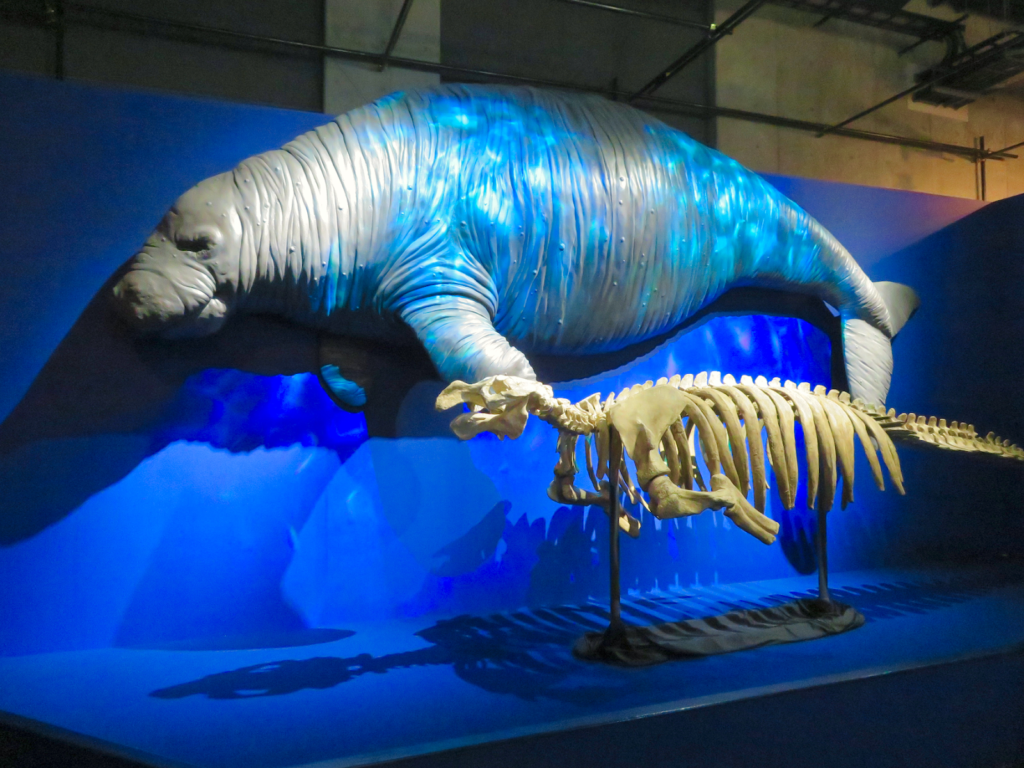
Wikimedia Commons
Steller’s sea cow was a massive marine mammal discovered in the 18th century along the North Pacific coast. Reaching lengths of up to 30 feet and weighing over 10 tons, these gentle herbivores thrived on kelp. Unfortunately, their slow movement and lack of fear of humans made them easy targets. Within 27 years of their discovery by European explorers, they were hunted to extinction for their meat and blubber. By the late 1700s, they were gone. Their loss serves as a stark example of how quickly human exploitation can lead to extinction, even in seemingly untouchable species.
3. Great Auk
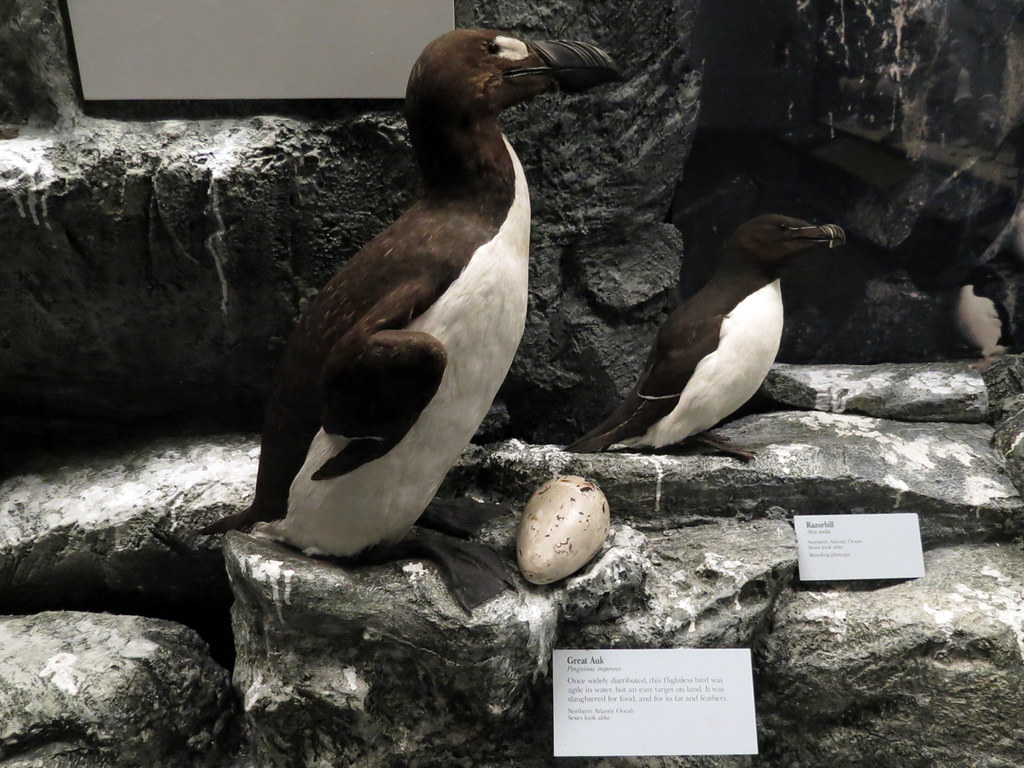
Flickr
The great auk was a flightless seabird that lived along the North Atlantic coasts, including parts of North America. Standing nearly three feet tall, it was a skilled swimmer but an easy target on land. Overhunted for its meat, eggs, and feathers, the great auk’s population dwindled rapidly. By the mid-19th century, commercial hunting had driven the species to extinction. The last known pair was killed in 1844 on Eldey Island, Iceland, despite efforts to protect them. The story of the great auk is a poignant reminder of how human activities, when left unchecked, can lead to the irreversible loss of a species.
4. Labrador Duck
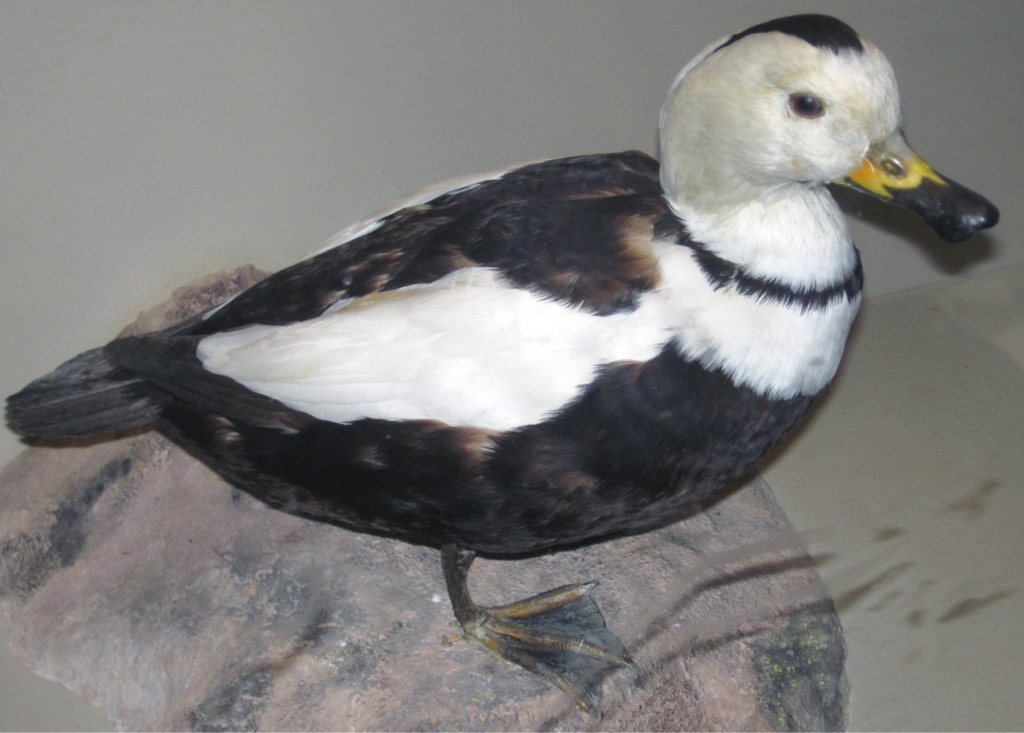
Wikimedia Commons
A mysterious species, the Labrador duck was last seen in the 1870s. Little is known about its ecology or the exact reasons for its extinction. It was thought to live along the North Atlantic coasts, feeding primarily on mollusks and other small marine creatures. Overharvesting of its food sources and habitat destruction are believed to have contributed to its decline. Additionally, the duck’s breeding grounds were never definitively identified, complicating conservation efforts. The Labrador duck is one of North America’s earliest recorded bird extinctions and remains a symbol of the unknown risks human activities pose to wildlife, even when little interaction occurs.
5. Dusky Seaside Sparrow

Animalia
Found only in the marshes of Florida, the dusky seaside sparrow was a small, dark-colored bird that went extinct in 1987. Its habitat was destroyed due to large-scale drainage projects, development, and the flooding of marshes for mosquito control. Pesticides and pollution further impacted its already fragile population, making it difficult for the species to rebound. Despite conservation efforts, including a desperate attempt to crossbreed with related sparrow species, the dusky seaside sparrow could not recover. The last known individual, named Orange Band, died in captivity. This bird’s extinction underscores the importance of preserving habitats before it’s too late.
6. Carolina Parakeet
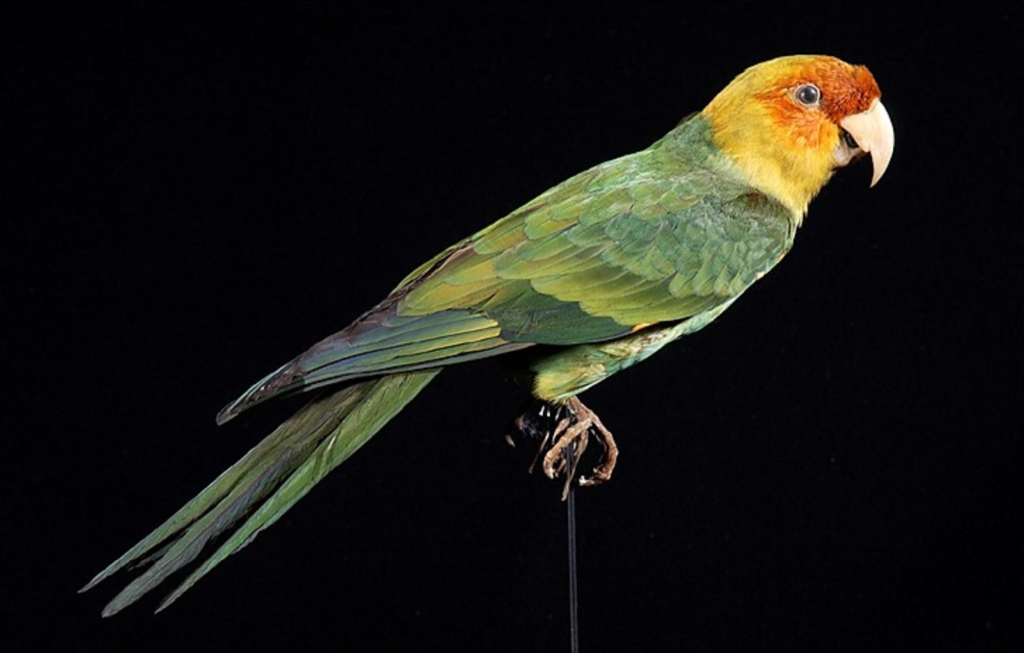
Wikimedia Commons
The colorful Carolina parakeet, native to the eastern United States, went extinct in the early 1900s. Known for their vibrant green and yellow feathers, these birds lived in forested areas and were often considered pests by farmers due to their love for fruit crops. Unfortunately, they were hunted extensively for their plumage and to protect crops. Habitat destruction from logging and agriculture further pushed them towards extinction. The last known individual died in captivity in 1918 at the Cincinnati Zoo. Their loss highlights the consequences of unchecked exploitation of natural resources and the importance of conserving biodiversity.
7. Heath Hen
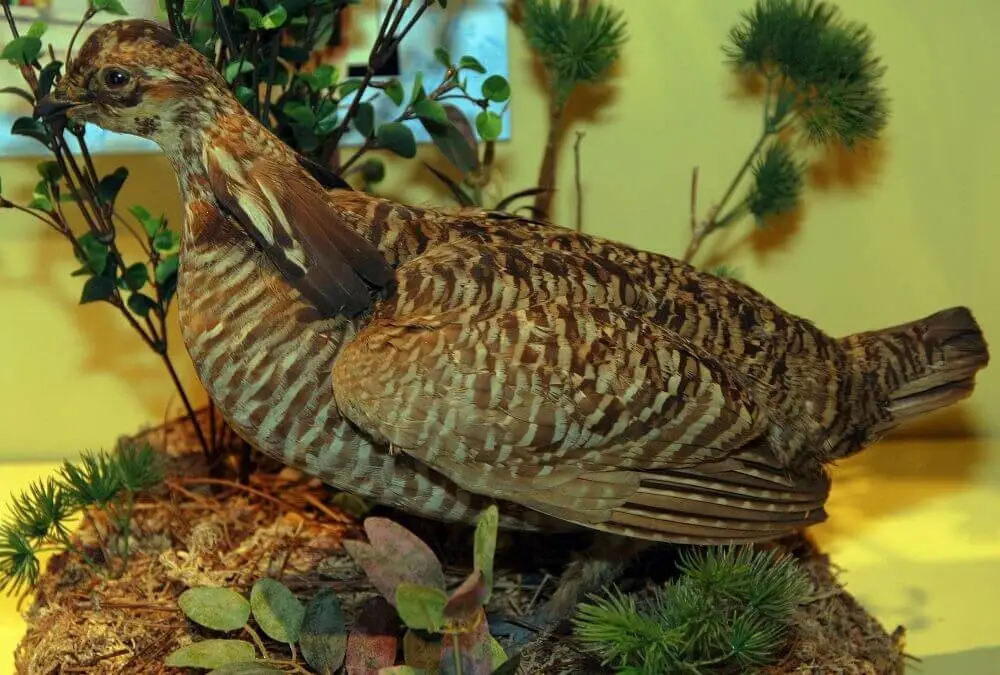
Animalia
Once common in the eastern United States, the heath hen was a ground-dwelling bird that went extinct in 1932. They were extensively hunted by early settlers, and their habitats were destroyed due to agriculture and urban development. By the 19th century, the heath hen population had been decimated, surviving only on Martha’s Vineyard. Despite efforts to protect the remaining population, including the creation of a preserve, disease, predation, and harsh winters took their toll. The last known heath hen, affectionately named “Booming Ben,” was last seen in 1932. Their extinction highlights the need for proactive and timely conservation measures.
8. Pinta Island Tortoise
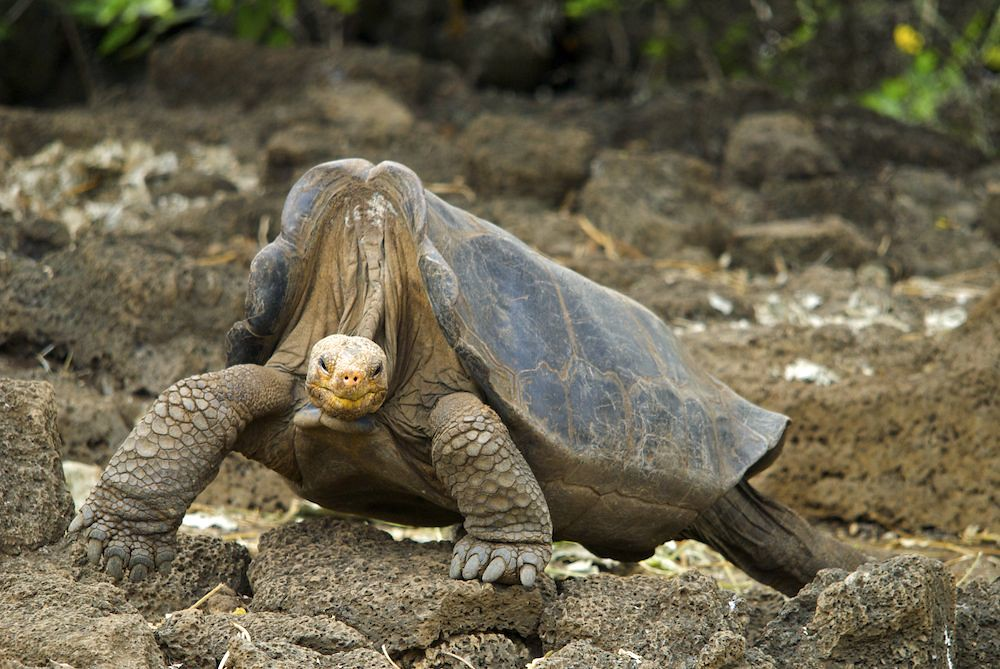
Flickr
Although technically native to the Galápagos Islands, the Pinta Island tortoise’s story is deeply tied to American-led conservation efforts. The last known individual, Lonesome George, died in 2012, marking the end of his subspecies. Habitat destruction from introduced goats, invasive species competing for food, and overexploitation by sailors led to their decline. Lonesome George’s discovery in the 1970s sparked global conservation awareness, but efforts to breed him with related subspecies were unsuccessful. The Pinta Island tortoise’s story has become a global symbol of the urgent need to protect endangered species and prevent further losses through coordinated action.
9. Passenger Pigeon
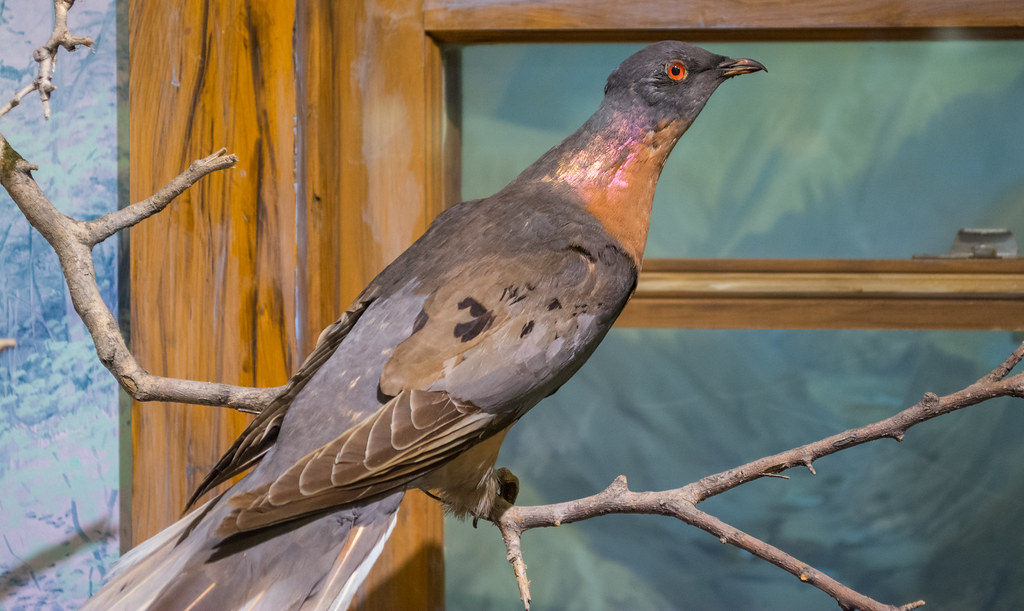
Flickr
Once the most abundant bird in North America, the passenger pigeon vanished in the early 20th century. Flocks of these birds were so immense that they darkened the sky for hours. Unfortunately, their massive numbers made them a target for commercial hunting and habitat destruction. By the late 1800s, overhunting had decimated their population. Railroads and telegraph lines made it easier to track their movements, exacerbating their plight. The last known passenger pigeon, Martha, died in captivity in 1914 at the Cincinnati Zoo. Their extinction remains a cautionary tale of how even the most plentiful species can disappear due to human greed and mismanagement.
10. Western Black Rhino

Animalia
A subspecies of the black rhinoceros, the western black rhino was declared extinct in 2011. While native to Africa, its story resonates in the Americas due to conservation efforts that attempted to prevent its demise. Rampant poaching for its horn and habitat loss due to agricultural expansion were the primary reasons for its extinction. Despite efforts to protect rhinos, including international bans on rhino horn trade, the western black rhino’s population could not recover. Its extinction is a sobering reminder of the global responsibility to combat wildlife exploitation and the urgent need to protect endangered species before it’s too late.
11. Tecopa Pupfish
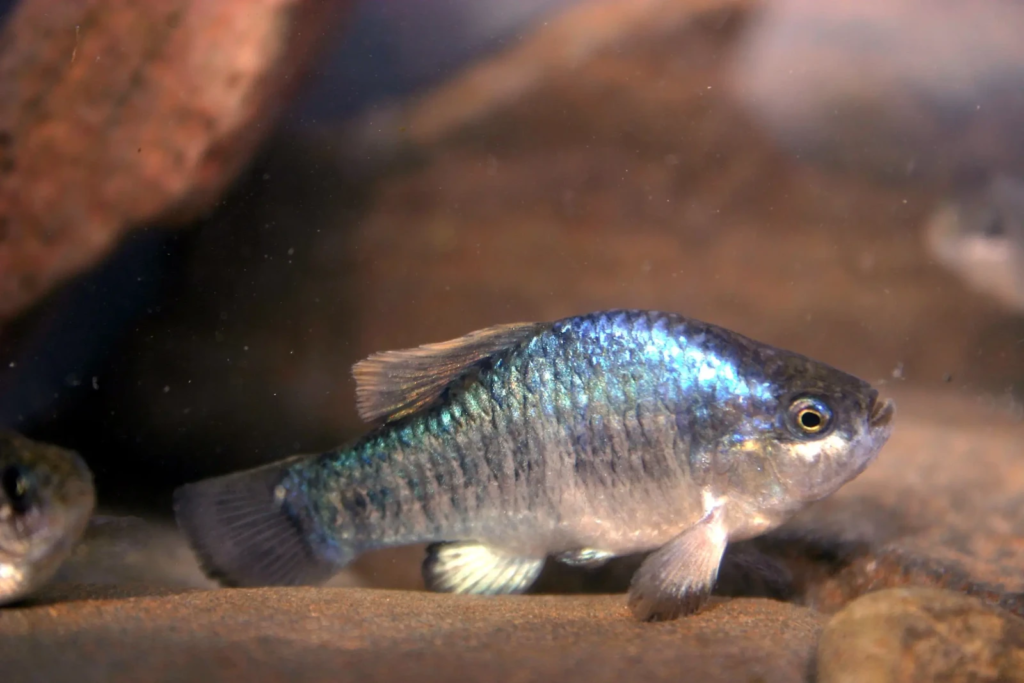
Animalia
Native to the hot springs of California’s Mojave Desert, the Tecopa pupfish was a small but resilient fish uniquely adapted to its harsh environment. Habitat alteration due to development and water diversion for recreational purposes led to its decline. By the 1980s, the Tecopa pupfish was officially declared extinct. This small fish’s extinction underscores the delicate balance of aquatic ecosystems and how human activities, even those that seem minor, can have devastating impacts. The loss of the Tecopa pupfish serves as a reminder that even the smallest species play a crucial role in their ecosystems and deserve protection.
12. Blue Pike

Flickr
A subspecies of walleye, the blue pike was once abundant in the Great Lakes and surrounding waters. Known for its bluish hue and delicious taste, it was a popular target for commercial fishing. Overfishing, pollution, and habitat degradation led to its rapid decline in the mid-20th century. By the 1980s, the blue pike was declared extinct. Its loss had significant ecological and economic impacts, disrupting food chains and local fishing economies. The extinction of the blue pike serves as a wake-up call for better fisheries management and the need to balance human consumption with environmental sustainability.
13. Pyrenean Ibex

Animalia
Although native to Europe, the Pyrenean ibex’s extinction in 2000 resonates globally as a symbol of conservation challenges. Once found in the Pyrenees Mountains, its population dwindled due to hunting, habitat loss, and competition with livestock. In a remarkable but ultimately unsuccessful effort, scientists attempted to clone the species, briefly bringing it back to life in 2003 before the clone died. The ibex’s story highlights the complexities of preserving species and the interconnectedness of global conservation efforts. It serves as a reminder that technological advances cannot always undo the damage caused by habitat destruction and human exploitation.
14. Eastern Elk
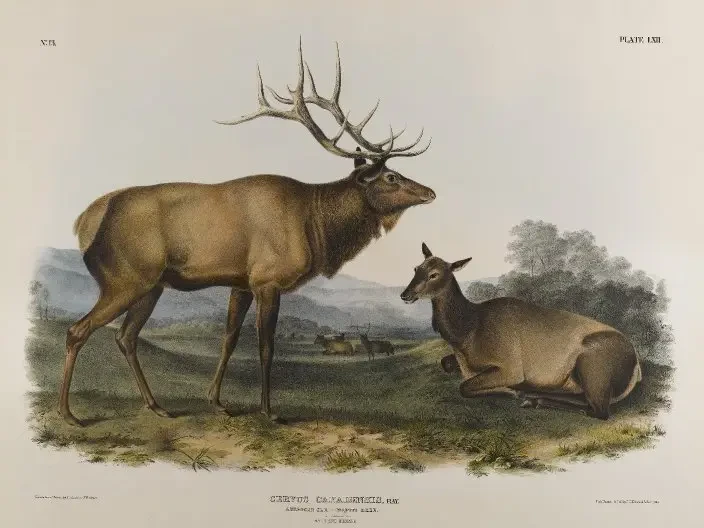
Animalia
Native to the eastern United States, the eastern elk was a majestic subspecies of elk that once roamed vast forests and grasslands. Early settlers overhunted them for their meat and hides, and habitat destruction from logging and agriculture sealed their fate. By the mid-1800s, the eastern elk was extinct. Efforts to reintroduce elk to the region have focused on western subspecies, which have successfully established populations in areas where eastern elk once thrived. The loss of the eastern elk underscores the importance of sustainable hunting practices and habitat preservation to ensure the survival of wildlife for future generations.
15. Sea Mink
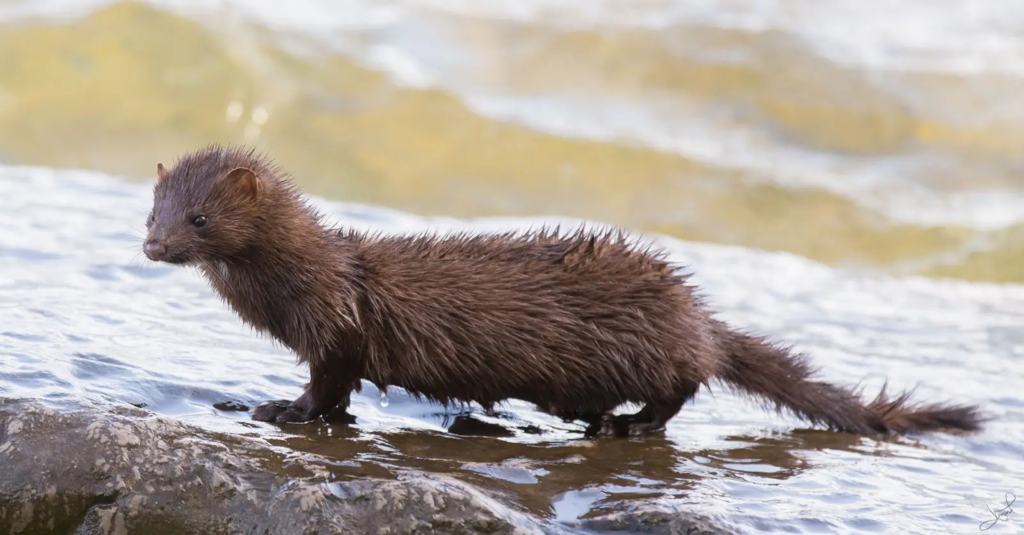
Animalia
The sea mink, native to the northeastern United States, was larger than its terrestrial relatives and lived along coastal areas. Prized for its luxurious fur, it was hunted extensively throughout the 19th century. Habitat loss and overhunting contributed to its decline, and by the late 1800s, the sea mink was declared extinct. The species’ disappearance highlights the devastating impact of overexploitation on wildlife populations. Today, the sea mink serves as a cautionary tale of how human greed can wipe out entire species and the need to prioritize conservation to protect vulnerable animals from a similar fate.


